Stewarding land and livestock for the next generation
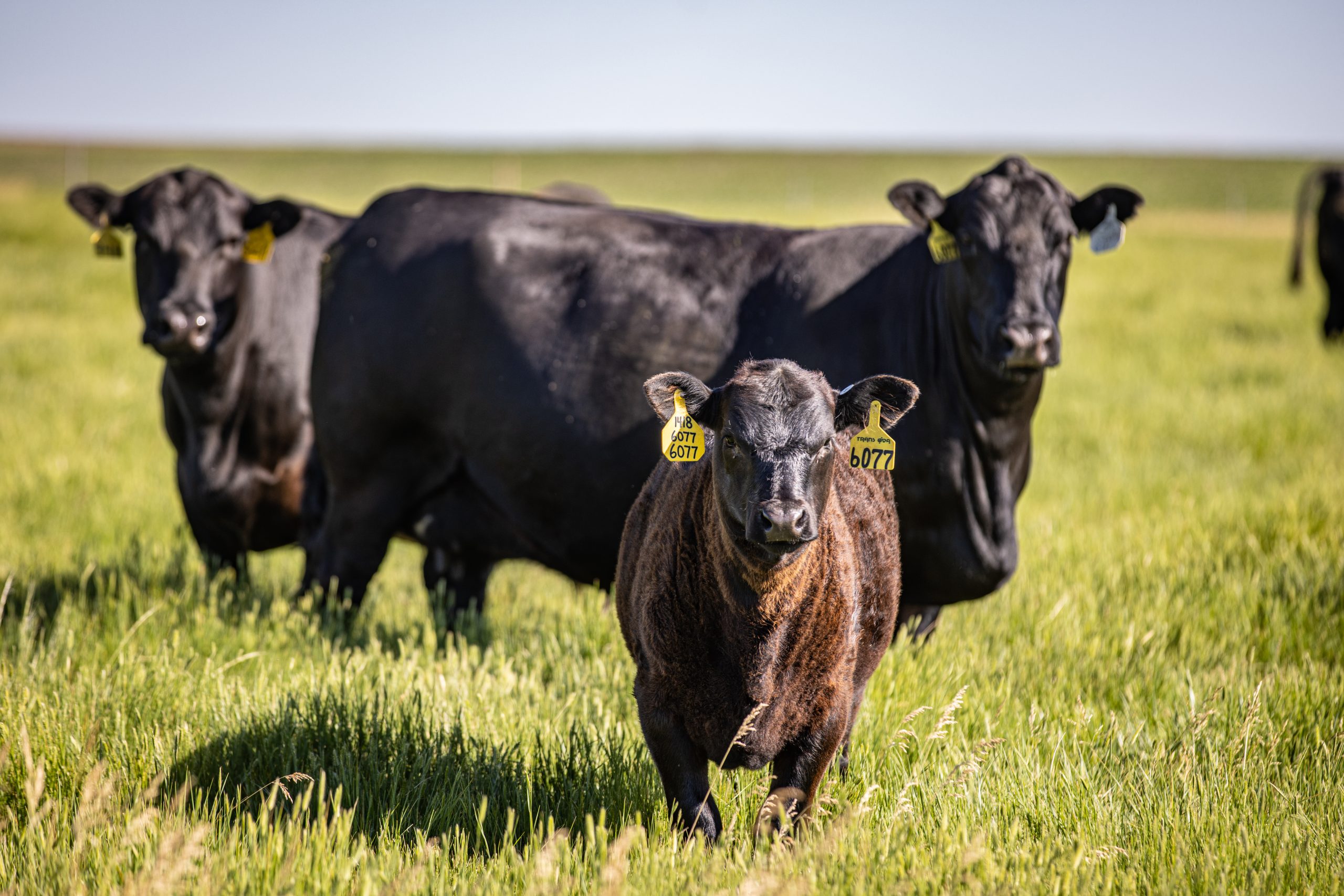
Looking out across the sprawling native prairie, farmland, wildlife and momma cows that populate Jorgensen Land & Cattle Partnership, two things are clear. It is fitting that the operation is located in Ideal, South Dakota, and the owners have mastered the art of farm and ranch stewardship.
Jorgensen Land & Cattle dates back to 1909, when Martin Jorgensen, Sr. and his wife, Gertrude, staked their claim on a farmstead near Ideal. In the 1950s, Martin Jorgensen, Jr. started breeding Angus cows and pioneered performance testing cattle, cementing a legacy of superior Angus genetics that is known around the world today. The above photo shows Angus from their ranch.
One hundred and fifteen years after the operation began, Martin Sr.’s third and fourth generation descendants are still on the land and actively working to restore it to the state it was in when he set up shop all those years ago. Their sustainability efforts have earned them recognition through the 2015 South Dakota Leopold Conservation Award and the 2022 Environmental Stewardship Award for Region VII.
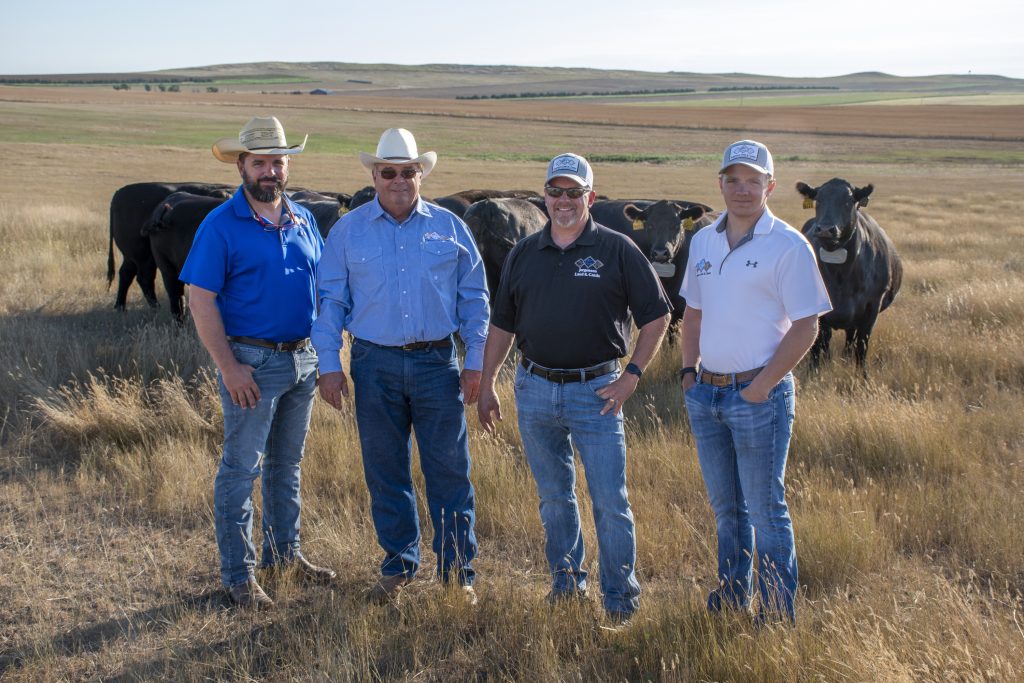
Today the partnership is comprised of Greg Jorgensen, who serves as vice-president of sales; his son Cody Jorgensen, chief livestock officer; Bryan Jorgensen, Greg’s brother, who is the chief agronomy officer; and Bryan’s son, Nick, who is the youngest partner and serves as chief executive officer.
Three objectives, intertwined
“When we look at an acre of land, we can do three things on that acre,” Cody said. “If that acre can be farmed properly with no-till practices and soil health in mind, while conserving or enhancing organic matter and getting it back to its most native state, that’s our goal. On that same acre if we could put a hoof on it and graze that acre, that would be the second thing. The third thing is what I call ‘agritainment’, like the pheasant hunting business. If we can do all three of those on that acre, then we know that will be extremely viable for generations to come.”
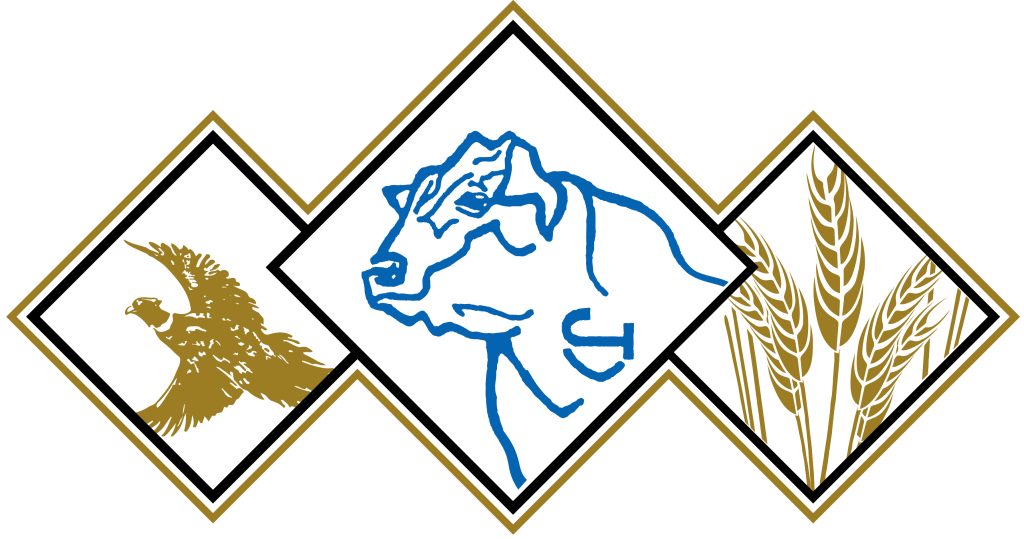
Cody said the Jorgensen Land & Cattle logo perfectly summarizes the structure of the operation and how each segment works together to foster animal stewardship, soil health and wildlife conservation. The logo is comprised of three diamonds interlocked.
The middle diamond is the largest and shows a bull, which symbolizes the primary income of the Jorgensen’s operation. On either side of it are two smaller diamonds featuring a beard of wheat and a pheasant. These represent the farming and hunting aspects of the partnership.
“We operate a total of 20,000 acres,” Cody said. “About 12,000 of that is farm acres and about 80 to 85% of those acres are used to raise feed for our bulls and the other 8,000 acres is strictly for native prairie grazing.”
Cody said in the 1980s, his father and grandfather were selling 200 to 300 bulls a year, but the operation has expanded over time. This year they expect to sell 6,250 bulls in 2024 alone.
On the cropping side, the Jorgensens have a diverse crop rotation consisting of winter wheat, corn, spring wheat, oats, soybeans, and alfalfa. Cover crops are also incorporated into the wheat stubble and are often grazed by the cows.
To capitalize on their sought-after pheasant population, the partnership built the Lazy J Grand Lodge in 2012 to provide an additional income stream and accommodate guided hunts.
Cody credits no-till farming as the reason for their healthy pheasant numbers that allow the agritainment side of the business to flourish.
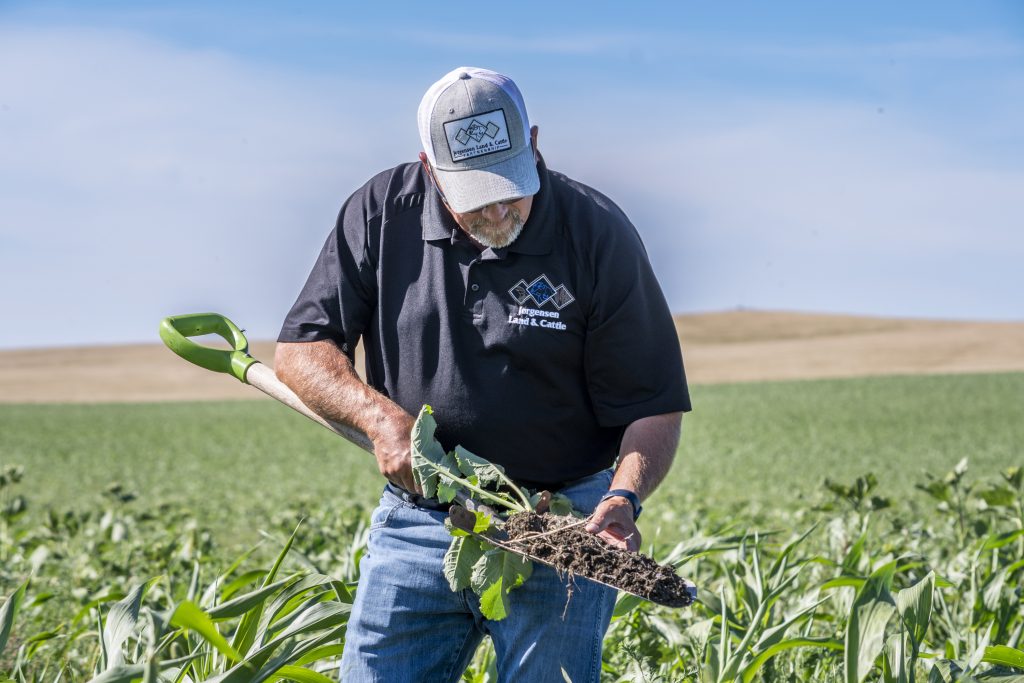
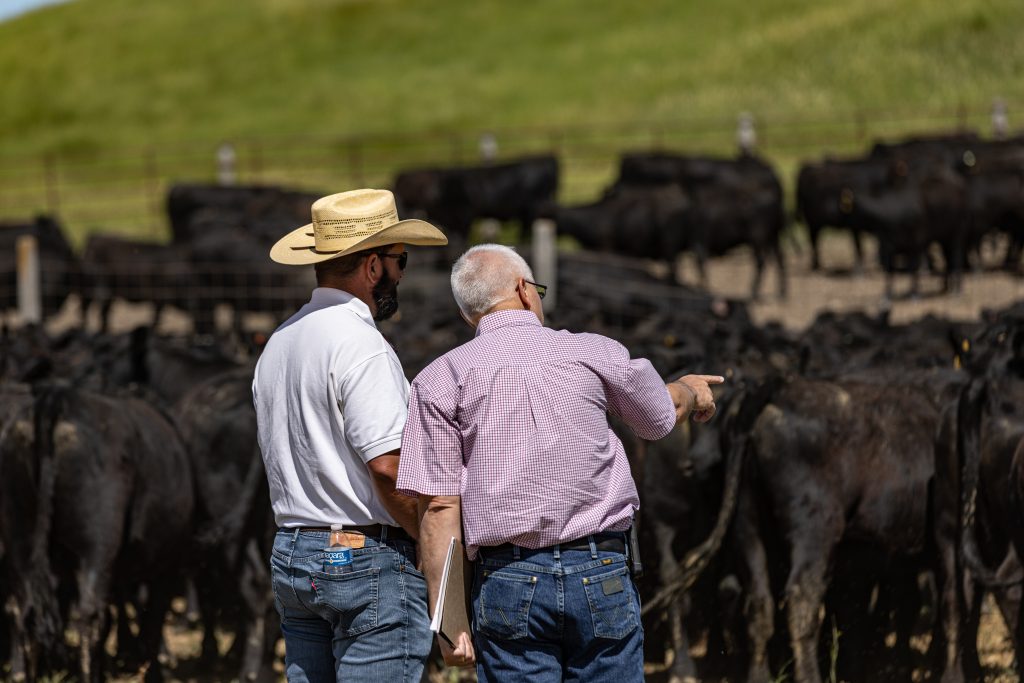
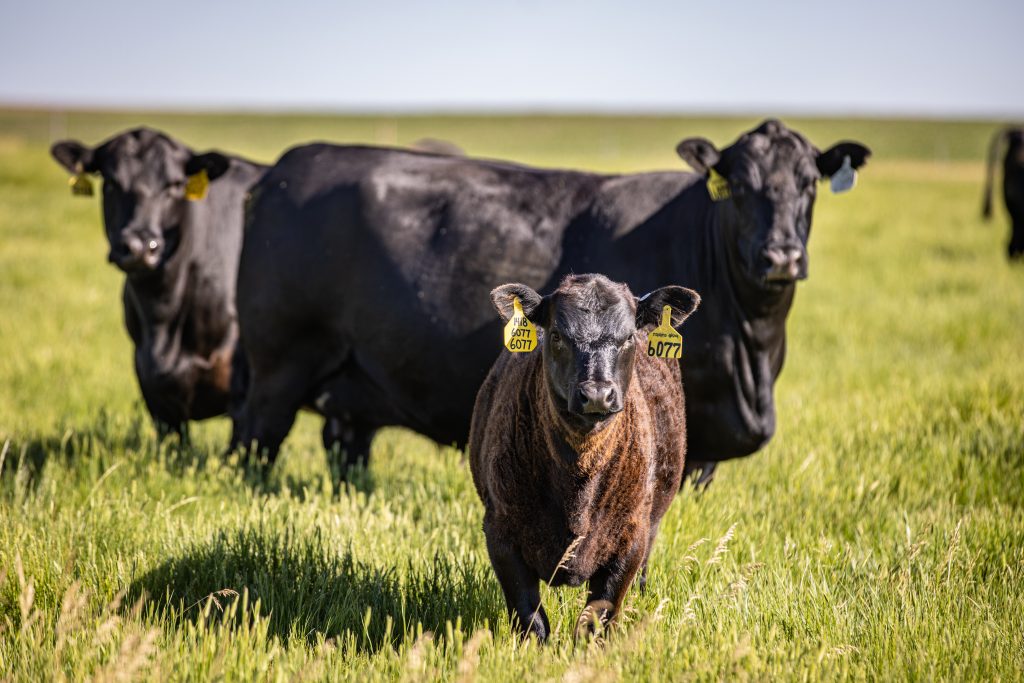
Put a hoof on it
Cody said the partnership really began to hone in on land stewardship and conservation efforts after the partners saw the impact of no-till farming practices. Additionally, Cody said in the 1980s and 1990s, Bryan, who is in charge of the cropping side of the operation, had concerns about grazing the farm ground due to soil compaction.
After several years of no-till farming and incorporating livestock, any concerns about hoof compaction melted away, because the Jorgensens realized these practices were rejuvenating the soil back to its natural state. Cody said the conservation efforts have allowed them to return some soils back to 7 to 8% organic matter.
“When it rains the water can actually filtrate through the soil and gets to where it needs to be instead of sitting there in a plow pan,” he explained. “These cattle spread their own manure and they grind the organic matter into the soil with hoof action. These things really enhance organic matter and create a good environment for the next crop. Once we recognized that, then we started grazing more crop ground and doing a lot more fallow grazing.”
Now Bryan demands that cattle are on the farm ground because it has made such a difference. Furthermore, Cody said every day an animal is grazing the land versus standing in a feed lot, it saves at least a $1.50 per head per day in feed costs. Additionally, he said the gain on the cattle has been comparable to their average corn crop in the past.
“With the right practices, grazing farmland is critical and we’ve got data to prove improved crop yields from when we grazed acres in the fall and winter,” he said. “It’s a big deal and not only that, but it’s better for the cattle.”
To access more forage for their cows and avoid adding miles of fencing, the Jorgensens have incorporated virtual fencing collars to their operation. Although Cody admits there are some challenges with keeping the collars on the cows, when they work it opens up thousands of acres of grass for grazing.
Sign up for HPJ Insights
Our weekly newsletter delivers the latest news straight to your inbox including breaking news, our exclusive columns and much more.
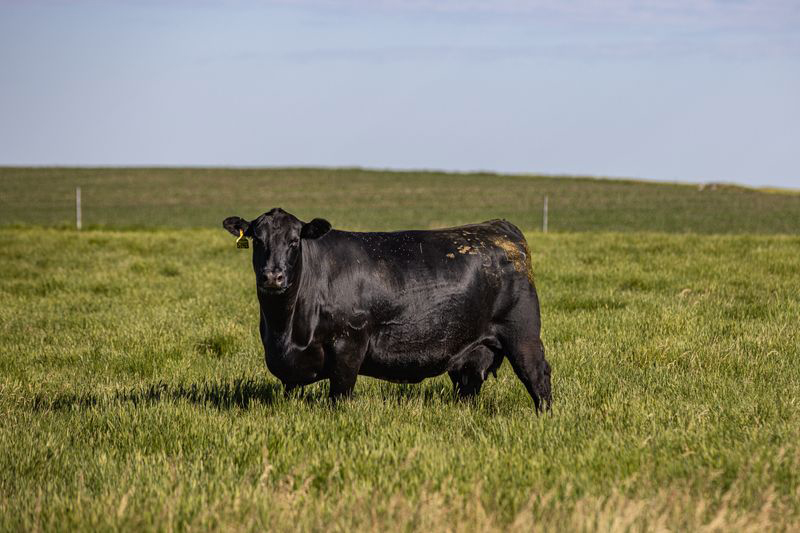
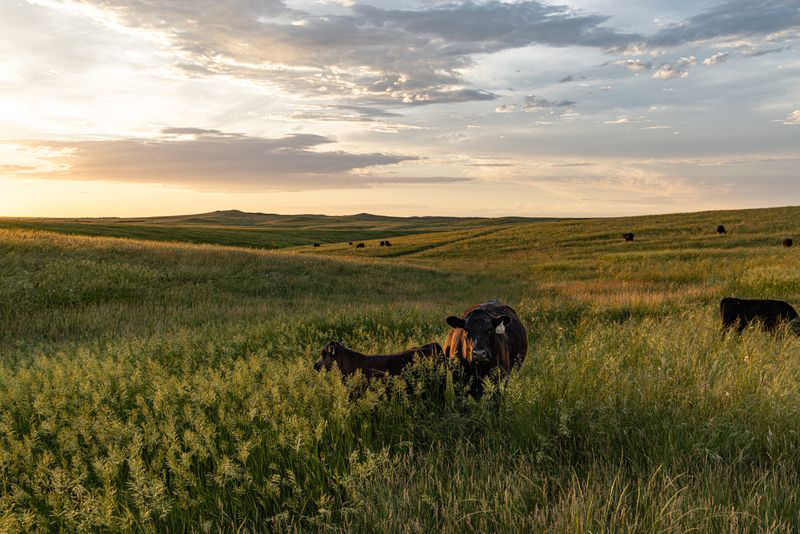
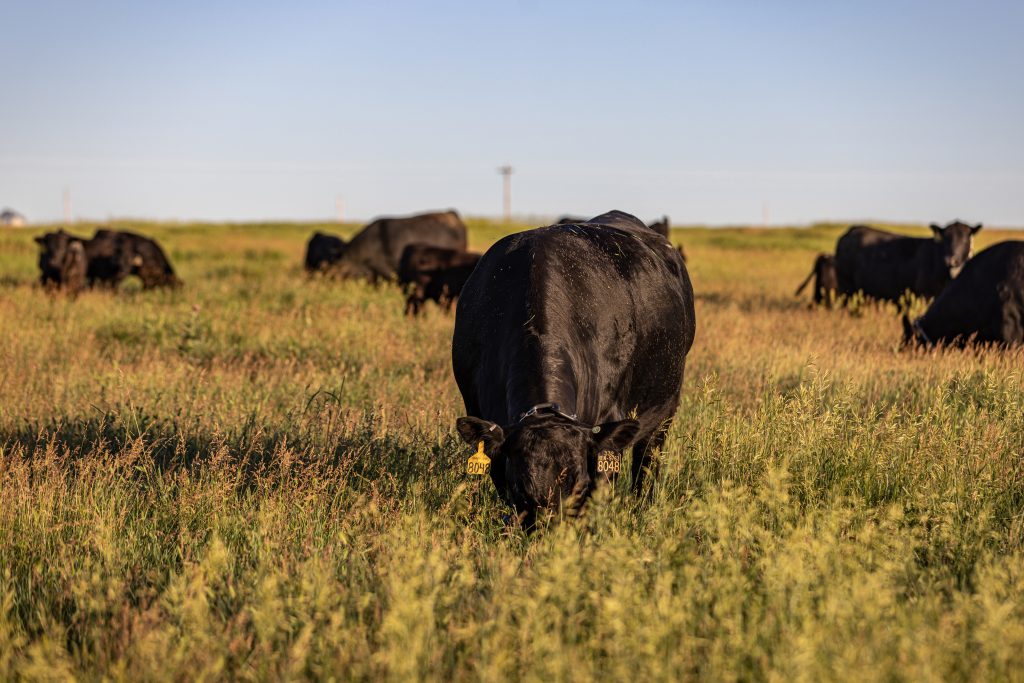
However, the Jorgensen’s animal stewardship runs deeper than proper utilization of forages. With the use of their intense rotational grazing system, Cody said they have actually eradicated parasites in their herds.
Due to this, they have no plans to apply any parasite control in 2024 and although flies are still present, he said their populations have been greatly reduced. This parasite control achievement not only saves their operation input dollars, it also reduces parasite resistant to wormer products, which has increased year after year.
Cody’s best advice to anyone who is interested in making regenerative changes on their operation is to pick up a spade and see the difference for themselves.
“Find a spot that has native grass or soil that’s never been tilled before and just go dig up a little bit of it and look at the root structure of those dynamic, diverse native species and then go dig up in your own crop area and look at the difference in terms of organic matter root structure. By feeling and smelling the soil I believe you will see the difference and that it will stimulate thought processes that you can implement in your specific area. Look at what Mother Nature did in that native setting and do your very best to mimic that.”
Lacey Vilhauer can be reached at 620-227-1871 or [email protected].



